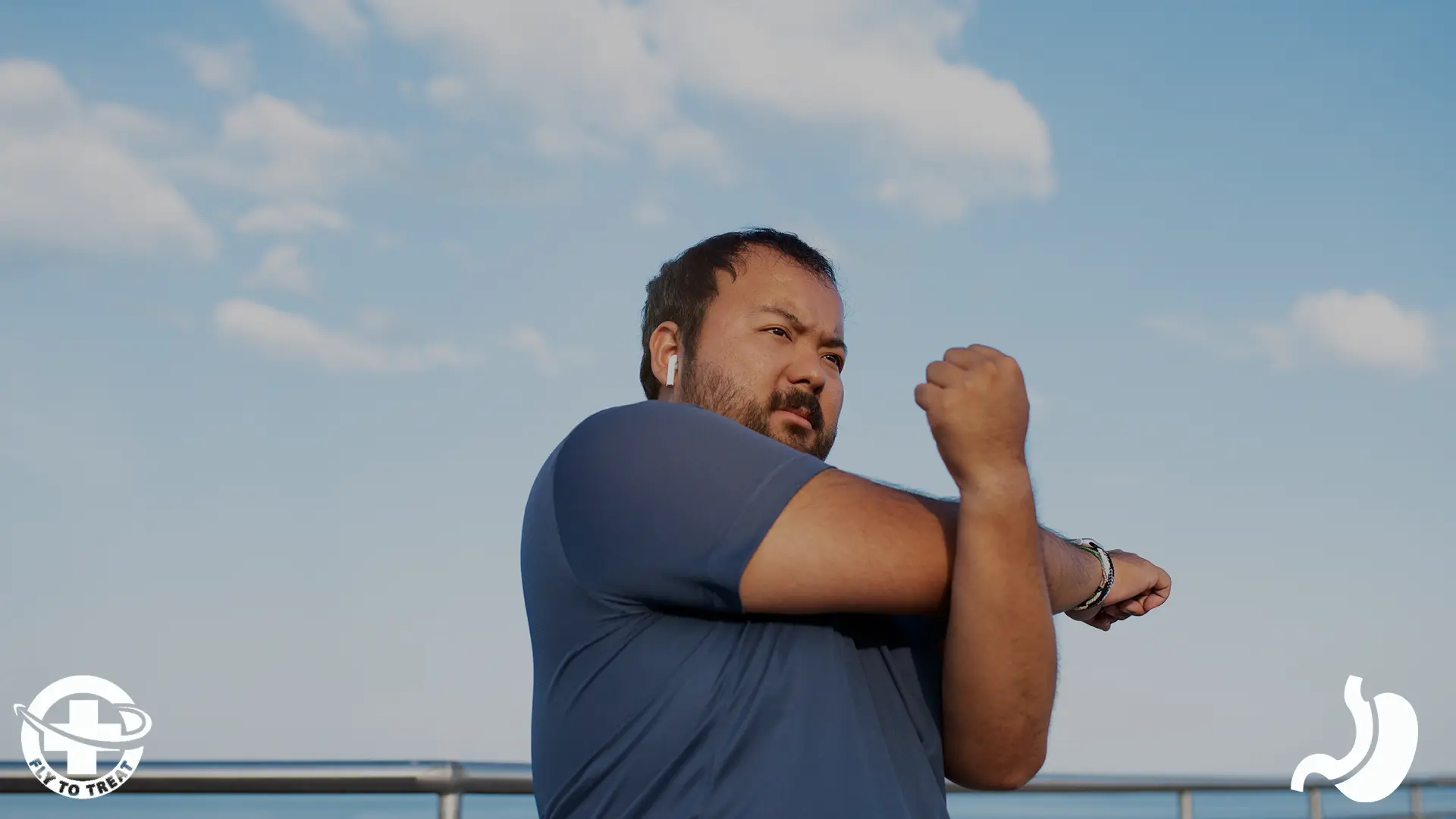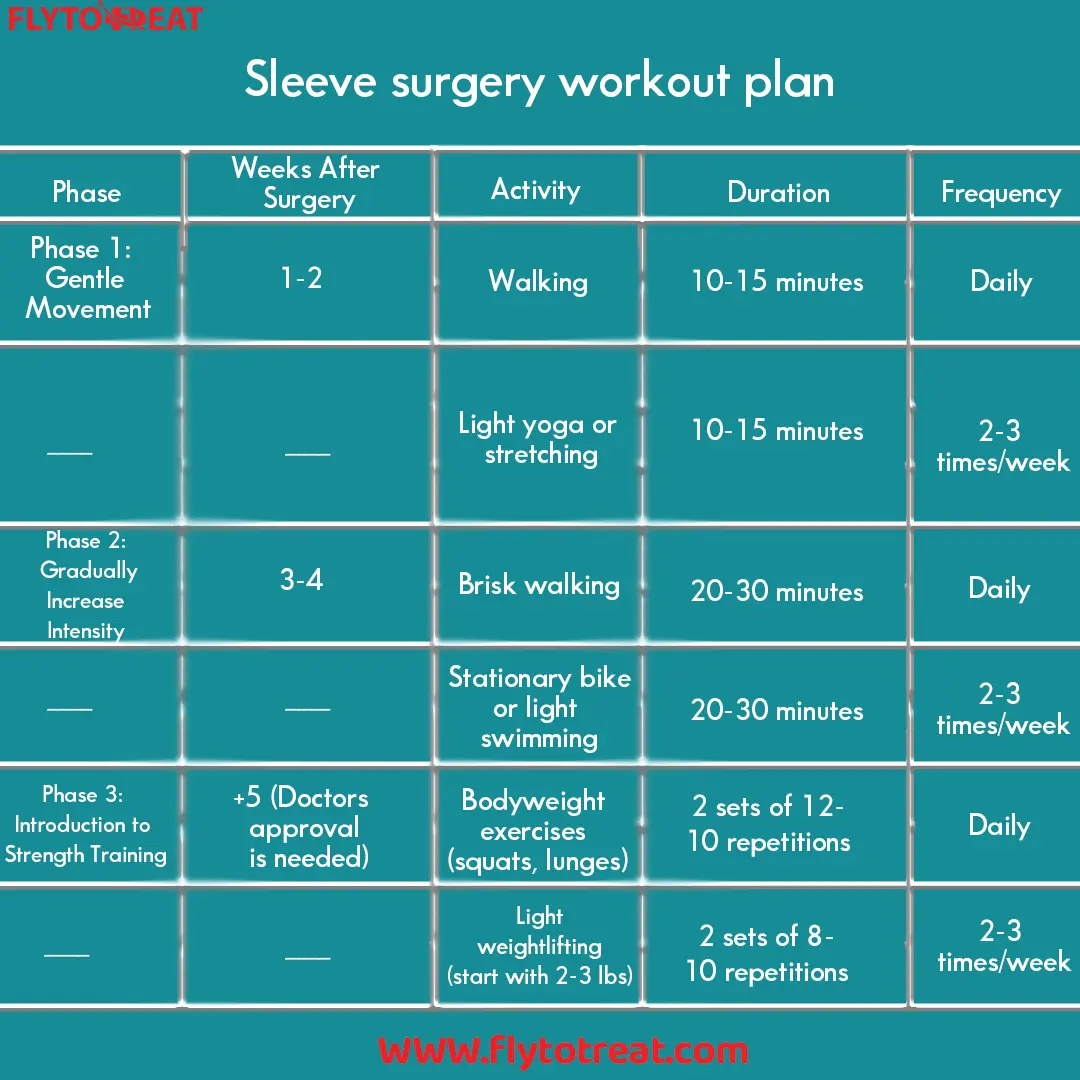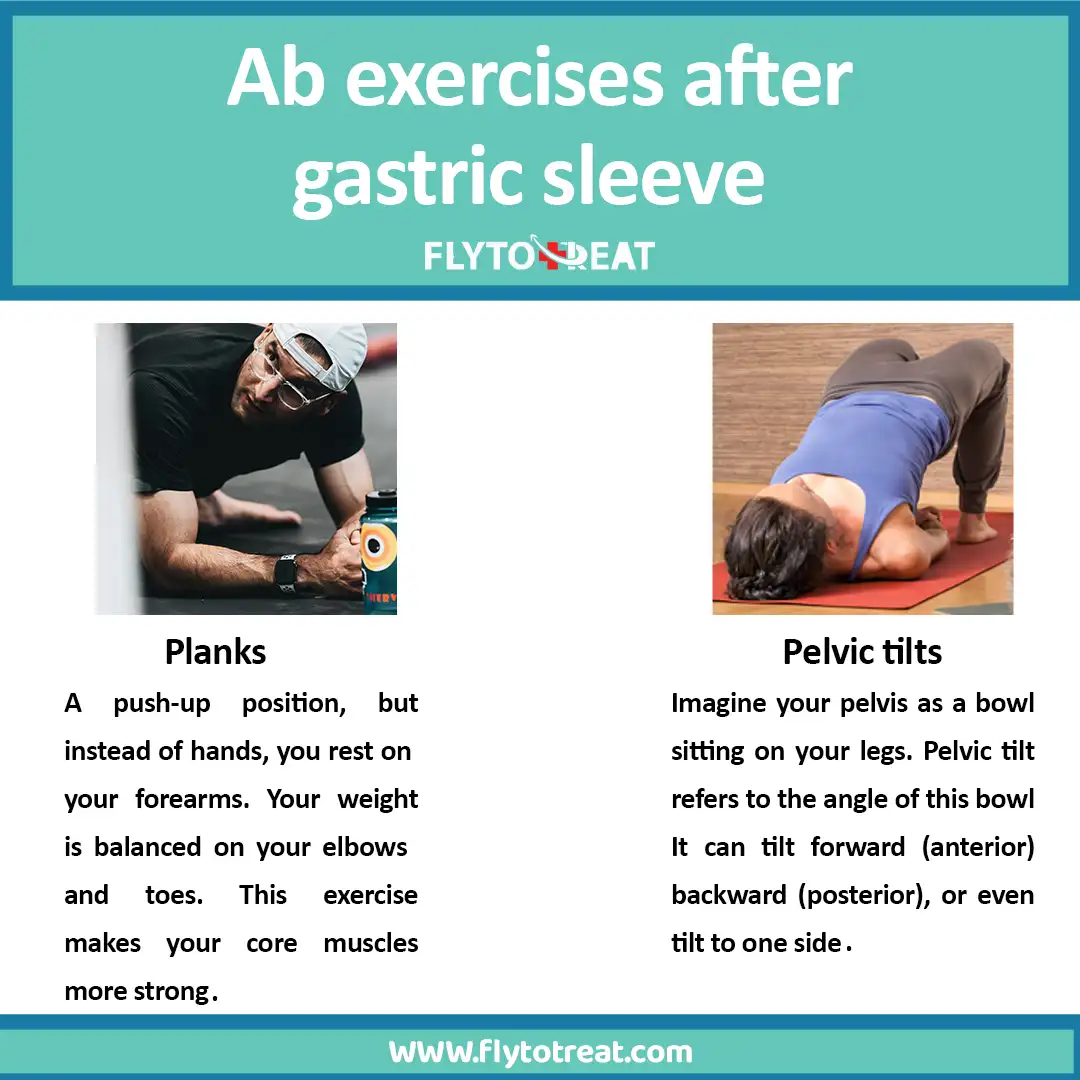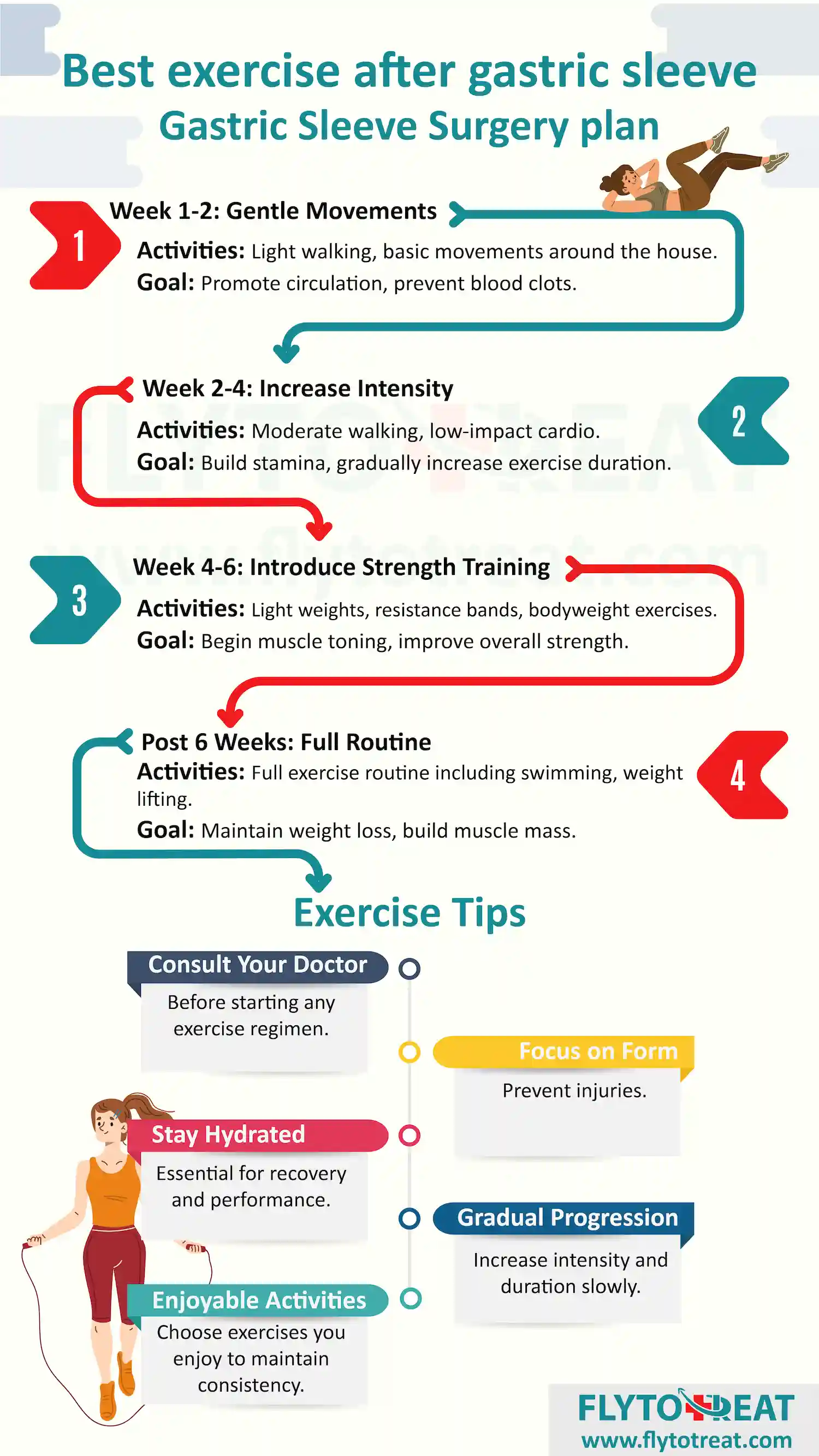
How soon after gastric sleeve can I exercise?
incorporating exercise after gastric sleeve surgery is a crucial step in enhancing recovery and promoting long-term weight management. FlyToTreat emphasizes the importance of a gradual and structured exercise regimen post-surgery. This article will address frequently asked questions such as "Swimming after gastric sleeve," "Why you should not exercise immediately after weight loss surgery," and "When can I lift weights after gastric sleeve" to guide patients through safe and effective physical activities.
Exercise after gastric sleeve surgery
Exercise after gastric sleeve surgery is not just possible; it's encouraged! Here's a jumpstart on your post-surgical routine:
• Start Gradually: Listen to your body. In the first week, focus on gentle walking and light movement around the house.
• Week by Week Progress: Gradually increase duration and intensity as you feel stronger. Aim for 30 minutes of moderate-intensity exercise on most days of the week.
• Focus on Many Types: Walking, swimming, biking, and light strength training are all great options. To make exercise a sustainable habit, opt for activities that you enjoy doing.
• Clearance from Your Doctor: Always consult your doctor before starting an exercise program after surgery. They can advise on a safe and effective plan based on your recovery.
Exercise is a powerful tool to support your weight loss journey and overall health after gastric sleeve surgery. By listening to your body and working with your doctor, you can develop a safe and enjoyable exercise routine that complements your new lifestyle.
Toning exercises after bariatric surgery
Options such as lunges, squats, and modified push-ups are excellent for toning and building muscle exercise after sleeve surgery. Once you feel stronger, incorporating resistance bands or light weights can enhance your workout and further improve your strength. Building muscle definition after weight loss surgery can be a great goal.
Before starting any new exercise plan after gastric sleeve, especially after surgery, always seek approval from your doctor. It's best to focus on low-impact exercises, as high-impact ones like jumping or heavy lifting can put a strain on your body post-surgery. Opt for bodyweight exercises, light weights, or resistance bands instead. Gradual progression is key, so start with low weights or bodyweight exercises and gradually increase the intensity of your workout as you get stronger. Don't forget to target all muscle groups, including your core, arms, legs, and back, to help create a balanced and toned physique.
It is important to note that you have to mind your diet after gastric sleeve and eat foods rich in protein. Also, here you can find a comprehensive guide to lifestyle after gastric sleeve surgery
The best exercise after gastric sleeve
There isn't a single "best" exercise after gastric sleeve surgery, but some options are particularly suited for this journey:
• Low-Impact Champions: Walking, swimming, and water aerobics are excellent choices. They are gentle on joints, promote cardiovascular health, and can be easily adapted to your fitness level.
• Strength Training Starters: Light weightlifting or resistance band exercises help build muscle, which boosts metabolism and improves body composition.
Exercise after sleeve gastrectomy comes in many forms, but most can be grouped into two main categories: cardio (aerobic) and strength training (resistance training). Here are some popular options:
• Cardio: Walking, hiking, swimming, aerobics (including water aerobics), biking, spinning, rowing
• Strength training: Yoga, dancing, weightlifting (barbells, dumbbells, kettlebells), resistance bands, bodyweight exercises (push-ups, pull-ups)
In addition to these basic types, you can explore specific programs like circuit training, interval training, and high-intensity interval training (HIIT).
When can I lift weights after the gastric sleeve?
Building muscle with weights is a great goal when it comes to gastric sleeve exercise after surgery, but after gastric sleeve surgery, some patience is necessary. Healing First Allow your body time to heal. Doctors typically recommend waiting 4-6 months after surgery before incorporating weight lifting. If you lift heavy weights early on, you put your incisions in danger of bleeding and postponed healing.
Even light weightlifting done regularly can yield great results. Focus on proper form and gradually increase intensity to build muscle safely and effectively after gastric sleeve surgery.
Sleeve surgery workout plan
While a personalized exercise plan after gastric sleeve is ideal, here's a sample exercise plan after gastric sleeve to jumpstart your routine after consulting your doctor and getting clearance:

This is just a general guide. It is advisable, to begin with slow movements and gradually increase the intensity and duration over time.
• Warm-up and cool-down are crucial for every workout session.
• Focus on proper form to avoid injury.
• Stay hydrated throughout the day.
• Pay attention to your body and take rest days as necessary.
• Consult a doctor or certified trainer for a personalized plan tailored to your progress and post-sleeve gastrectomy exercise needs.
How much should I walk after bariatric surgery?
Walking is a fantastic exercise after weight loss surgery! Here's a guide to get you started, but remember to consult your doctor for personalized advice:
• Start Gradually: In the first week, focus on short walks around the house or gentle strolls outside.
• Increase Slowly: Aim to gradually increase the walking duration by 5-10 minutes each week.
• Seek doctor's guidance: Discuss walking goals with your doctor. They can advise on a safe and effective walking program for your post-bariatric surgery recovery.
• Aim for 30 Minutes Most Days: Generally, strive for at least 30 minutes of moderate-intensity exercise most days of the week.
• Increase your step counts: You should aim to walk 10,000 steps per day, gradually increasing the distance and intensity as you feel able.
Swimming after gastric sleeve
Swimming is a perfect exercise after sleeve gastrectomy! But in that case, likewise, begin with short swims and gradually increase duration and intensity as you get stronger. Here's why it's a great choice:
• Gentle on Your Body: Swimming is low-impact, putting minimal stress on your joints while providing a full-body workout.
• Boosts Recovery: The water's buoyancy can improve circulation and aid in healing after surgery.
• Doctor's Clearance is Crucial: Always get your doctor's approval before swimming post-surgery. They'll advise on a safe timeline considering your post-gastric sleeve recovery.
Swimming is a refreshing and effective way to stay active after weight loss surgery. Listen to your body, prioritize safety, and enjoy the cool water as you move towards your fitness goals!

Ab exercises after gastric sleeve
Building a solid core is essential, but after gastric sleeve surgery, some waiting is necessary. give your body time to heal from surgery. Doctors typically recommend waiting at least six weeks before incorporating ab exercises. Begin with exercises like pelvic tilts or planks after 6 weeks.
Pelvic tilts: Imagine your pelvis as a bowl sitting on your legs. Pelvic tilt refers to the angle of this bowl. It can tilt forward (anterior), backward (posterior), or even tilt to one side. The ideal position is a neutral tilt, where the bowl sits balanced.
Planks: Imagine a push-up position, but instead of hands, you rest on your forearms. Your weight is balanced on your elbows and toes. This exercise strengthens your core muscles
Aim for a few sessions per week, not daily. Ab exercise after vsg surgery strengthen your core, even if they don't solely target belly fat.

Conclusion
Adhering to a tailored exercise plan after gastric sleeve surgery is vital for optimal recovery and sustained health benefits. FlyToTreat supports patients in navigating their post-operative journey with comprehensive guidelines on when and how to reintroduce physical activity effectively. By understanding the appropriate types of exercises, including the benefits of swimming and the precautions for weight lifting, patients can ensure they are taking the proper steps to maintain their health and support their new lifestyle after surgery.
MEDICALLY REVIEWED BY: Dr. Ali Bazazi
AUTHOR: FlytoTreat's team of Authors
14 May 2024 - Updated At: 21 July 2024
Related Articles
Comment






